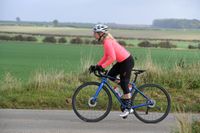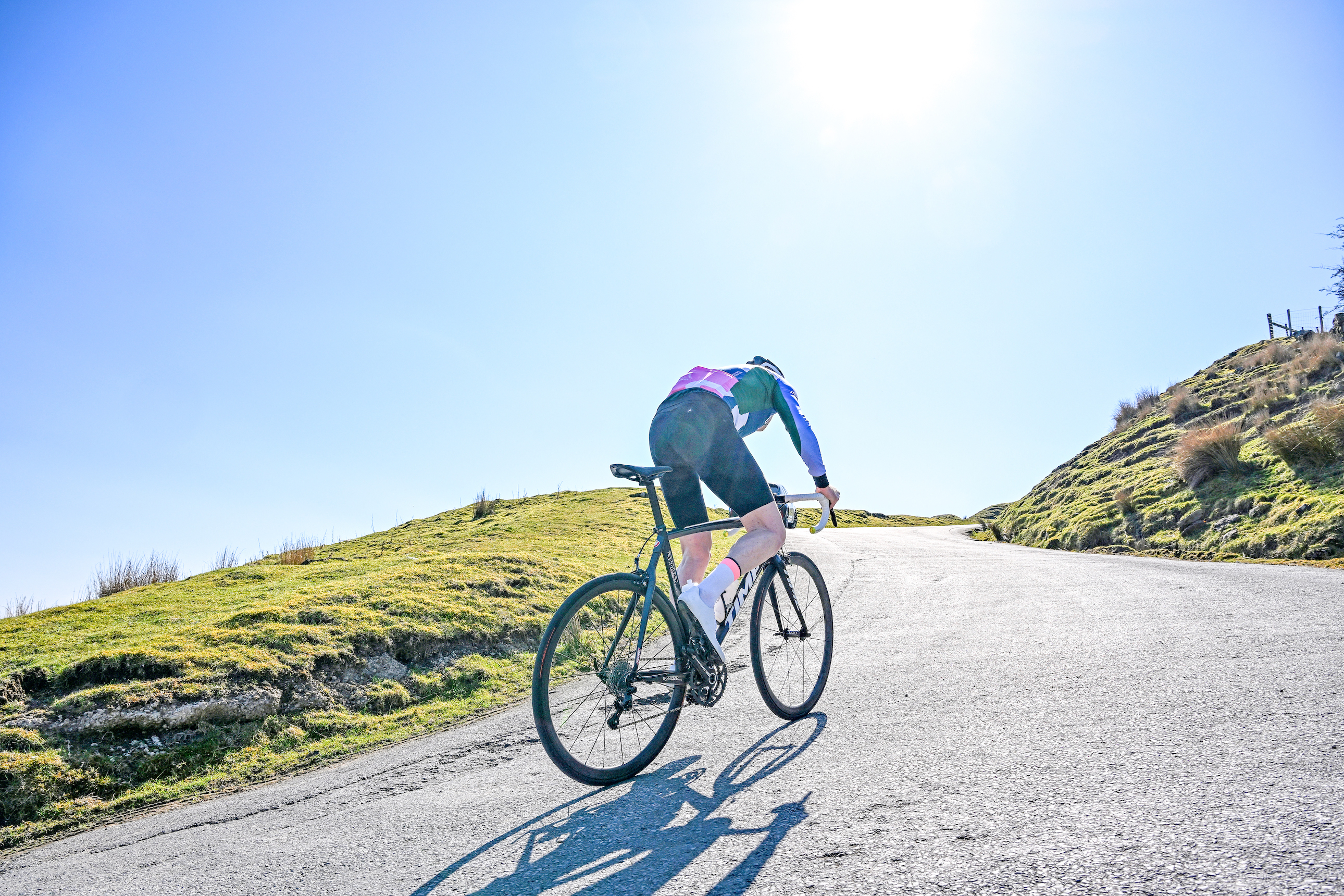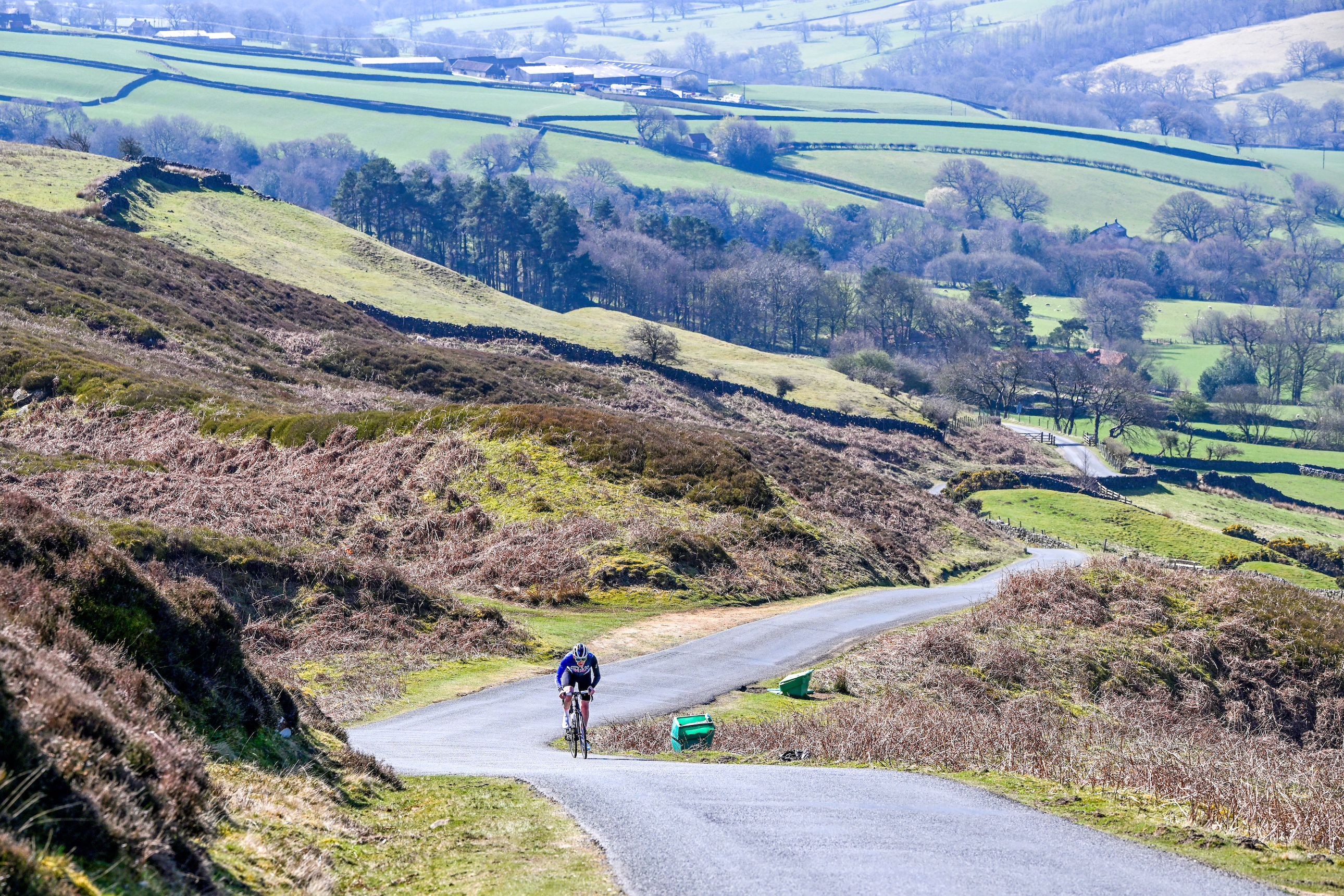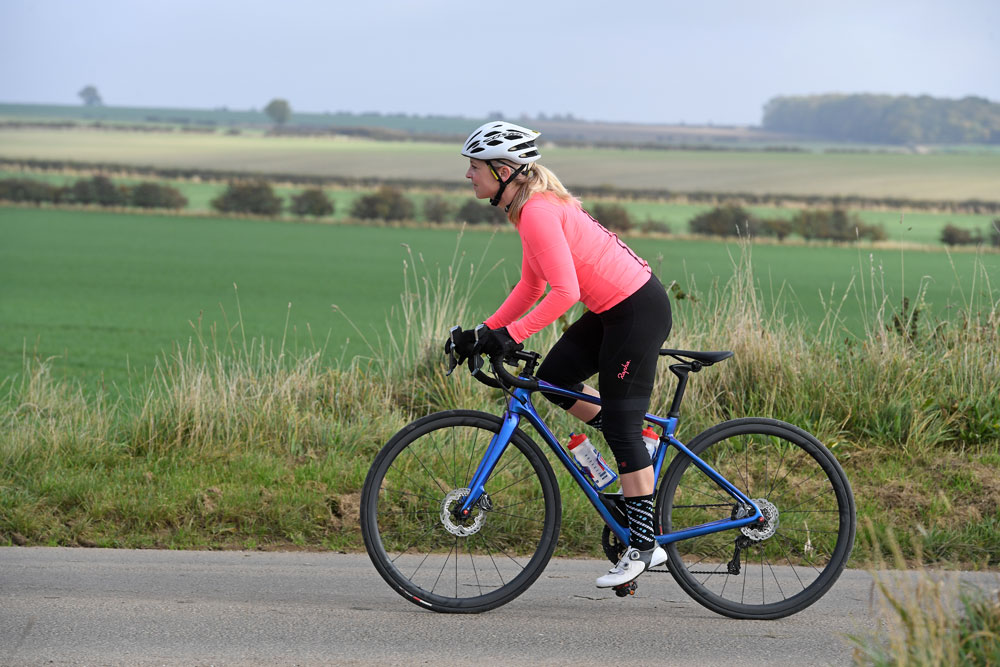Are you riding too much? Studies show you can get just as fit training only at weekends?
“Weekend warrior” used to be a term of derision – but new science suggests two well-executed rides per week could be all you need


“This is rare for me – usually I can only get out at weekends.”
Sound familiar? It came from a rider on my regular Tuesday night ride. As always with a group of cyclists, we were busy getting our excuses in early: too much work, childcare, bad weather, a broken bottom bracket – they all came out. It was a wonder any of us had made it to the start.
That said, my first reaction was to empathise. Lately I’d lost my appetite for cycling, conscious that I’d been failing to string together enough consistent training rides to make progress, and it was becoming disheartening. My ‘Fitness and Freshness’ graph told the story – brief upward blips followed by a steady slide back to the bottom. Cycling, I told myself, is only fun when you’re fit – otherwise, it’s just hard work.
The term ‘weekend warrior’ is often used with a hint of derision by riders with plentiful spare time. It implies that anyone riding only on Saturdays and Sundays is somehow less serious, less committed, and unlikely to reach serious levels of performance. But for many of us, being a weekend warrior isn’t a choice – it’s simply all we can manage. And now there is evidence that weekend-only training might be just as good as training across several days of the week.
No worries for warriors
The good news for weekend warriors comes in the form of research published in February by the Scandinavian Journal of Medicine and Science in Sports, suggesting that cramming your rides into the weekend might be just as effective as spreading them out. The study compared two groups over an eight-week training programme, one riding twice a week (weekends only), the other four times (high-frequency training).
Both saw similar improvements in fitness and health, particularly in VO2 max and muscle capacity. The implication would appear to be that spreading sessions through the week isn’t crucial, provided you match the volume and intensity at weekends.
Fantastic – we’re not haemorrhaging fitness between Monday and Friday after all. We can keep smashing out those big weekend rides, safe in the knowledge that we’re reaping similar benefits to our weekday-riding counterparts. But hold on – that’s not the whole story. How our bodies respond to training depends heavily on the intensity and duration of each session.
The latest race content, interviews, features, reviews and expert buying guides, direct to your inbox!
While the effects of exercise intensity are well understood, the role of frequency has been studied less. Here’s the crucial detail: in the study, the weekend warriors and the high-frequency trainers did the same total volume, and none of them began in well-trained form.
This feature originally appeared in the print edition of Cycling Weekly, on sale in newsagents and supermarkets, priced £3.35. You can subscribe through this link here.
Turn up the volume
In the study, the weekend warrior group trained twice per week on back-to-back days, while the high-frequency group trained four times per week with no obligation to ride on consecutive days. Because the total training volume was matched, each session for the weekend warriors had to be twice as long as those in the high-frequency group. For the former group, this meant one longer endurance ride of around 80 minutes, followed the next day by a brutal interval session with eight four-minute efforts at threshold.
Meanwhile, the high-frequency group spread out their training stress across five days, with less volume and intensity in each session. The key difference between the two training routines lay in how much stress each workout placed on the body and how frequently that stress occurred. For the weekend warriors, sessions were longer and more taxing, with five days of recovery between each two-day training period, while the high-frequency group trained more often but for shorter periods, with no more than two days of recovery in between.
Generally, intensity is the biggest driver of workout stress. Research shows that muscle fatigue and the accumulation of exercise-related byproducts don’t increase in direct proportion to duration, although longer sessions do expose the body to peak stress for longer. With the weekend warrior model, the body is pushed hard twice a week, followed by extended recovery periods. Little and often, or loads just at weekends – which is better?
To drill down into this question, I spoke with Dr Jamie Pringle, associate professor of exercise physiology at the University of Birmingham. “It’s an interesting study and a hard one to perform from a physiological point of view,” he said. “I applaud the research team for taking it on.” Pringle cautions against viewing the study in isolation: “It should be seen in the context of the authors’ wider body of work.”
One of the authors’ previous studies compared sprint-interval training (SIT) and endurance training (ET), assessing how each influenced muscle metabolism. Despite SIT involving short, intense sessions totalling just one hour per week, and ET requiring 4.5 hours of steady-state riding, both approaches led to comparable gains in fitness and metabolic adaptation. The takeaway was that training need not be time-consuming to be effective. The new study echoes this theme in finding that, when volume and intensity are matched, low-frequency routines like the weekend warrior model are not inherently inferior to high-frequency approaches.
However, there is a catch – and arguably a major one. The study’s weekly training volume – for both groups – was just 2.5 hours, which is far less than the average training volume of a Cycling Weekly reader. OK, an hour on Saturday, then 90 minutes on Sunday might just about qualify as weekend warrior training, but most serious amateurs rack up upwards of four hours per week. To be seriously competitive, even as an amateur, much higher volumes are needed – too much to squeeze into weekends alone.
“You can get fit as a weekend warrior, but can you reach your full potential? That’s a different question,” says Pringle. To illustrate the challenge, he lays out what it might look like: “Four sessions a day, spaced two hours apart, each lasting up to 90 minutes – that’s six hours a day, 12 hours across the weekend. That would get you close.”
Even if cramming that much training into a weekend didn’t break you, would it get you fit? “Would you get the same adaptation as doing 90 minutes a day across six days a week? That’s an interesting question,” says Pringle. But it’s a question few weekend warriors will have the time, or desire, to answer.

Jogging muscle memory
While it’s promising that both groups in the study improved despite the low volume, it’s worth noting that the participants were cycling newbies. “If you’re already well trained, that’s a different context – the training effect on someone new to cycling will be very different,” warns Pringle. How long you’ve been cycling plays a big role in how your body responds to training frequency and intensity. “A fair number of weekend warriors have trained systematically in the past,” says Pringle. “There seems to be a kind of muscle memory – if you’ve done high-intensity training before, you can return to it and still benefit from that past effort.” In other words, a previously well-trained weekend warrior can regain fitness more quickly and with less training. Even if they’ve had a layoff and not ridden for weeks, perhaps even months, their training history still counts. Pringle uses a Christmas tree metaphor: when you first start training, you rapidly hang new baubles of fitness on the lower branches. As you progress, gains are harder to come by – you’re reaching for higher branches. “Even if you’re very detrained, restarting almost from scratch,” he says, “your body remembers how to climb the tree.”
If you look closely at the training in the study, it doesn’t truly reflect typical weekend warrior behaviour. The sessions were relatively short – just over an hour – and tightly controlled for both intensity and duration. A real-life weekend warrior, speaking from experience, rides for several hours with a group, digging deep on climbs, launching senseless sprints, and eventually crawling home completely wrecked. That’s the beauty of weekend warrior life: we’re fresh, fired up, and ready to chase anything that moves. As for control, forget about it. Having recovered for five days, we arrive at the weekend ready to throw everything into our rides, which can yield considerable training gains but also carries a risk of going too deep.
Stick to the plan
If you want to train smarter, the answer is almost always the same: have a plan, and stick to it. “You get fit from doing stuff and keeping on doing it,” says Pringle. “Being able to do something month on month, year on year is what makes the difference.” In the study, not only were volume and intensity carefully controlled, but they were also progressively adjusted over the eight-week training block to ensure continual development. It’s worth noting too that participants completed 99.2% of the prescribed sessions – consistency few of us match in real life. As for how much training is actually needed to see improvement, that’s harder to pin down. “You need to do enough, but not too much. Enough to get an adaptation, but not so much that you can’t recover,” Pringle concludes.
At its core, the research is encouraging news for weekend warriors – and for people like me who’ve long carried the guilt that riding only twice-weekly doesn’t constitute proper training. If weekends are all you have, you can still make meaningful fitness gains. Those sessions matter, especially if you’re just starting out or have a solid base from previous training. But if your goal is to move beyond weekend warrior status and push your performance further, adding even one or two more sessions a week will make a real difference. “A consistently higher volume of training seems to be more important in the long term,” says Pringle. “High intensity gives you very fast returns, but not necessarily long-term ones.” The real magic, as always, lies in consistency, control and following a structured plan – whether it’s over seven days a week or just two.
Weekend warrior training: key stats from the study
8 – Length of the study, in weeks
28 – Number of participants – 14 men and 14 women
4.3 – Average increase in VO2 max, in ml/kg/min, among participants in the ‘weekend warrior’ group
4.9 – Average increase in time to exhaustion, in minutes, for the ‘weekend warrior’ group
19 – Average increase in total haemoglobin mass, in grams, in the ‘weekend warrior’ group
150 – Amount of training per week, in minutes, that proved enough to produce significant performance gains
Get it right: Train like a true weekend warrior
SATURDAY: INTENSITY Use a HIIT protocol or intense group ride to hit your VO2 max system. Intervals of 2–7min at 90–100% max heart rate.
SUNDAY: ENDURANCE Ride long to build endurance and muscular conditioning for longer events and sportives. Focus on time in the saddle.
Hannah Reynolds interest in cycling began while studying for a degree in Sports Science at the University College Chichester and surrounded by elite level cyclists. She is now undertaking a PhD at Sheffield Hallam University investigating the use of e-bikes by older people.
A committed dabbler whose passion outweighed her talent Reynolds has competed across all disciplines of cycling bar BMX. In the very distant past she has been south-east road race champion, southern cyclo-cross champion and finished third in the European 24hr Solo mountain-bike champs in 2011. She was also the Fitness Editor of Cycling Weekly for 15 years.
Hannah Reynolds is author of several cycling books, France-en-Velo a guide to the ultimate 1000 mile cycle route from the Channel to Med; Britain's Best Bike Ride. LEJOG1000; A 1000 mile journey from Land's End to John o' Groats and 1001 Cycling Tips.
You must confirm your public display name before commenting
Please logout and then login again, you will then be prompted to enter your display name.
